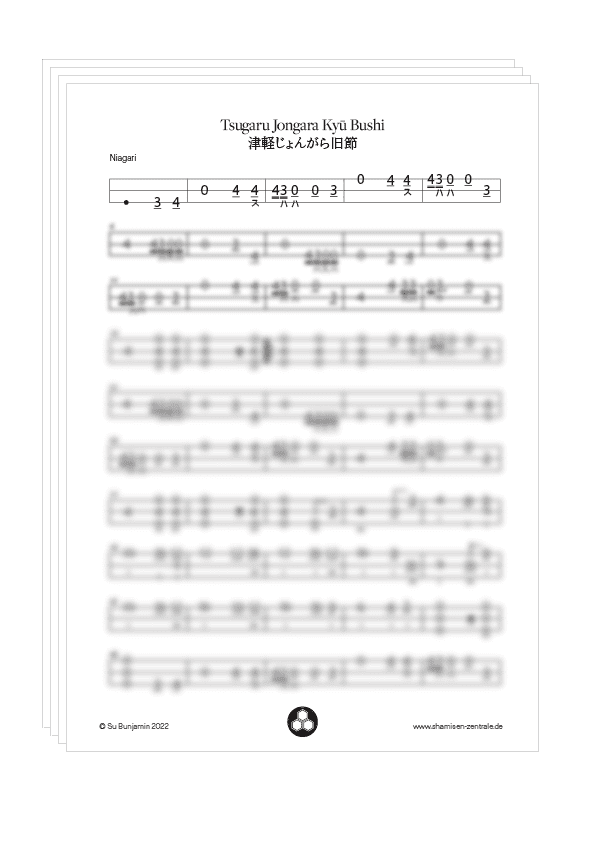Tsugaru Jongara Kyū Bushi
This is what you’ll get:
- 2 pdfs: tabulature notation in two versions (with and without maebachi)
- mp3 file
Song specifications:
- advanced beginner to intermediate level
- niagari tuning
- direct download
2,95 €
Details
Get the notation for Tsugaru Jongara Kyū Bushi plus a super useful play along file to help you learn and practice the song!
The notation comes in two different versions: with and without maebachi indication. Why? Because it can be easier to play the maebachi when it’s indicated in the notation, but if you don’t play this technique yet, it can be distracting when you see additional signs in the notation that you don’t use 🙂
The play along is recorded in straight rhythm. It’s fun to play it with a special groove – send me a note if you want to know more about that!
You can download the files from your customer account page after the purchase – a link will be provided in the order confirmation e-mail.
Wanna have a short listen to see if you like the tune? Here’s the beginning of Tsugaru Jongara Kyū Bushi:
About the song:
Tsugaru Jongara Kyū Bushi is a good foundation if you want to understand the characteristics of Tsugaru Minyo better. This version is the singing accompaniment version. The iconic fancy solo version of “Tsugaru Jongara Bushi” which is without a doubt the most well-known song for Tsugaru Shamisen style developed from an extended prelude to the singing accompaniment.
This song is attributed to Aomori prefecture, and as with every Japanese folk song it comes in countless variations. This version is written out for shamisen in bunkafu (tabulature) notation. It is suited for advanced beginners to intermediate players. The typical 4300-phrases are played on all strings, which is a fun challenge in the beginning, and covers a very wide range of notes up to the high registers. Add maebachi-technique to fully bring out the dynamic of this typical Tsugaru Minyo piece.
- Tuning: Niagari
- Techniques: sukui, hajiki, tsuretara, maebachi, oshibachi/suberi
Note: A second pdf is provided with colored markings indicating maebachi.
Tuning:
In every tuning, the strings are tuned in a certain relation to each other. For folk songs, there’s no fixed rigid tuning to a definite pitch (in contrast, the A-string on the violin is always tuned to 440 or 442hz) but what’s most important is how the strings are tuned in relation to each other.
A good rule of thumb is to tune your instrument over the base of C. This means, the big string will be tuned to C and the other strings according to the tuning of the song:
Honchōshi: C-F-C
Niagari: C-G-C
Sansagari: C-F-Bb
Access to the pdf:
Please note that this item is downloadable once only – just as receiving a physical copy of the scores would be. Consider it a “direct delivery”.
After the purchase, you can download the file from your account page under “downloads” or via the link in your order confirmation email.
Make sure you save your file in an easy to locate directory. Please don’t hesitate to contact us via email if you need further assistance.
